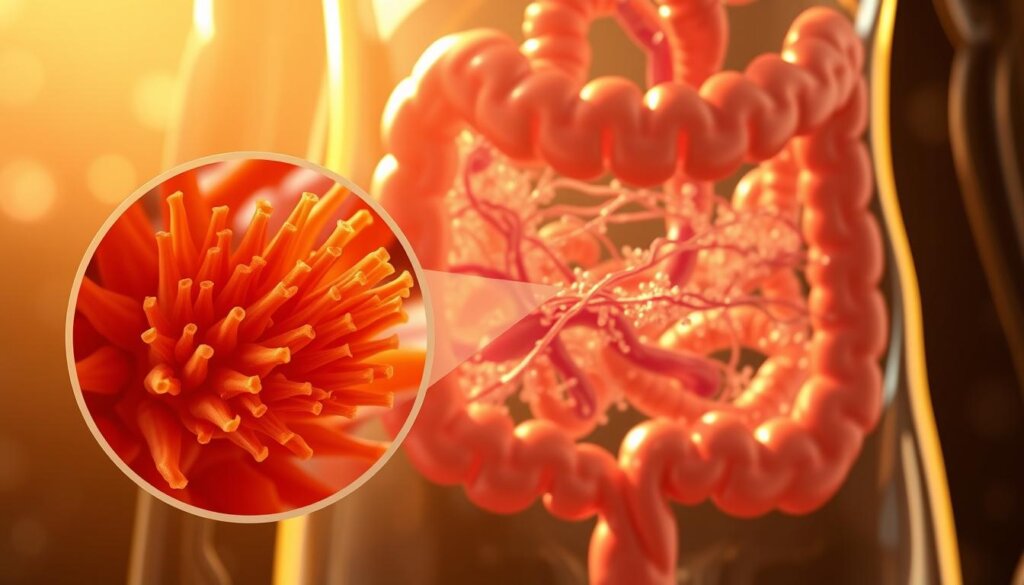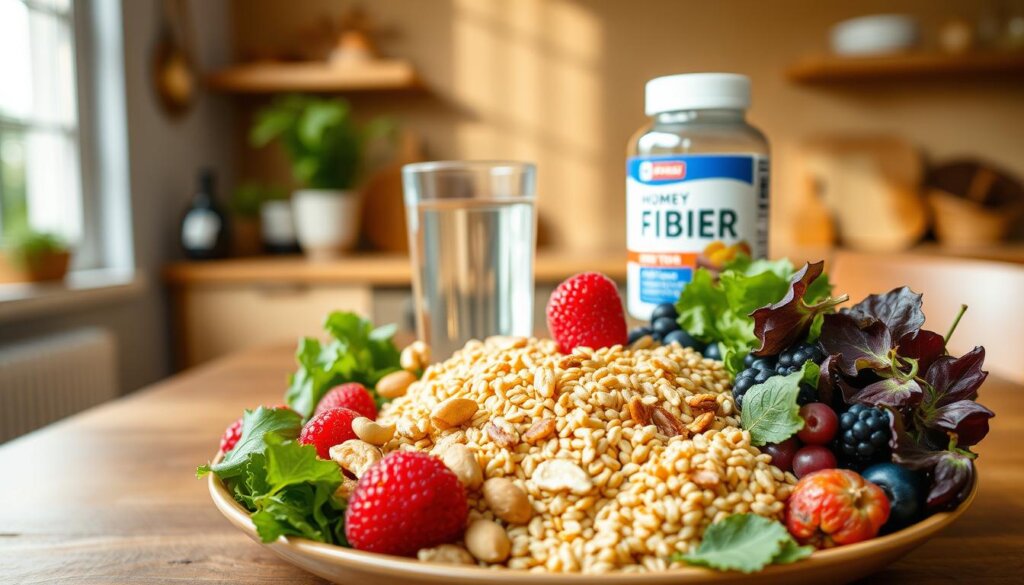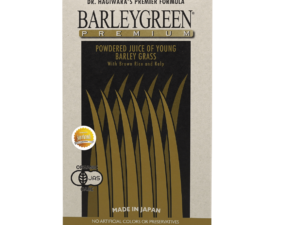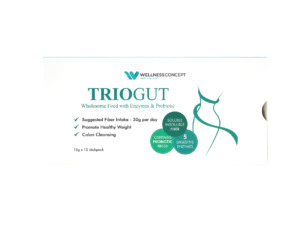Did you know 1 in 3 people following plant-based diets report digestive discomfort from excessive fiber intake? While this nutrient supports gut health, overdoing it can trigger surprising changes in bowel habits. Understanding the balance between benefits and overconsumption is key for maintaining digestive wellness.
Consuming more than 14 grams of fiber per 1,000 calories daily often leads to noticeable shifts in digestion. Many experience bloating, irregularity, or even temporary constipation as their bodies adjust. These effects are particularly common among those embracing vegan lifestyles or whole-food meal plans.
Fiber plays a vital role in digestive enzyme production, but moderation remains crucial. Sudden increases in dietary roughage can overwhelm the gut, causing gas formation and altered stool consistency. In rare cases, extremely high intake might even lead to intestinal blockages requiring medical attention.
Key Takeaways
- Excessive fiber consumption may cause bloating, gas, or irregular bowel movements
- Recommended daily intake varies between 25-38 grams for most adults
- Gradual dietary changes help prevent digestive discomfort
- Persistent symptoms could indicate underlying health concerns
- Professional guidance ensures personalized nutrition strategies
Wellness Group’s nutrition experts (+60123822655) help Malaysians navigate fiber intake challenges during business hours: Monday-Friday 9:30am-6:30pm, weekends 10am-5pm. Their team provides tailored advice for maintaining gut health while enjoying fiber-rich foods.
Introduction to Fiber and Digestive Health

Click to 了解更多
Your gut health depends heavily on a nutrient you can’t even digest: fiber. Found in everyday foods like oats, lentils, and leafy greens, this plant-based powerhouse works behind the scenes to keep your digestive system running smoothly.
What Makes Fiber Special?
Dietary fiber refers to the parts of plants your body can’t break down. Unlike proteins or fats, it passes through your system mostly intact. This unique quality gives fiber its superpowers:
- Acts like a broom for your intestines
- Feeds trillions of gut bacteria
- Helps maintain steady blood sugar levels
| Food Type | Fiber Content | Key Benefits |
|---|---|---|
| Lentils (1 cup) | 15.6g | Supports heart health |
| Broccoli (1 cup) | 5.1g | Boosts immunity |
| Oats (½ cup) | 4g | Regulates cholesterol |
Gut Harmony Through Fiber
A balanced gut microbiome needs fiber to thrive. These friendly bacteria produce essential nutrients and help regulate digestion. Regular intake can:
- Improve nutrient absorption
- Strengthen intestinal lining
- Support mental clarity
Modern diets often lack enough fiber-rich foods, making conscious choices crucial. Pairing different fiber sources creates synergy for optimal gut performance.
Understanding Dietary Fiber: Soluble vs. Insoluble
Not all fiber is created equal—your body uses two main types differently. Soluble and insoluble varieties play distinct roles in digestion, each contributing to gut health in unique ways. Knowing their differences helps create meals that support regularity and overall wellness.
What is Soluble Fiber?
Soluble fiber acts like a sponge in your digestive tract. When mixed with water, it forms a gel that slows digestion. This type helps:
- Stabilize blood sugar after meals
- Lower LDL cholesterol levels
- Maintain soft, easy-to-pass stools
Great sources include oatmeal, lentils, and citrus fruits. A bowl of lentil soup or apple slices with almond butter makes for smart choices.
What is Insoluble Fiber?
Insoluble fiber works like nature’s broom. It adds bulk to stools and speeds up food movement through the intestines. Key benefits include:
- Preventing constipation
- Supporting regular bowel rhythms
- Cleaning intestinal walls
Find it in whole wheat bread, carrot sticks, and kale salads. Leaving skins on potatoes or cucumbers boosts intake effortlessly.
Balancing both types prevents digestive issues. Those lacking fiber often benefit from gradually increasing these foods. Pairing chia seeds (soluble) with roasted broccoli (insoluble) creates a gut-friendly combo most enjoy.
What happens to stool with too much fiber?
Many assume eating more roughage guarantees smoother digestion, but crossing your body’s limit creates unexpected challenges. When intake surpasses what the gut can process comfortably, several noticeable changes occur.
Digestive Symptoms and Changes
Excess dietary roughage transforms stool texture and bathroom experiences. Undigested plant matter absorbs water like a sponge, creating bulky masses that strain intestinal muscles. This often leads to:
- Harder, drier stools despite increased frequency
- Abdominal pressure resembling a balloon inflating
- Slower transit times during digestion
Common Issues: Bloating, Gas, and Constipation
Fermentation processes in the colon go into overdrive with surplus fiber. Gut bacteria produce methane and hydrogen gases as they break down undigested material. Simultaneously, mineral-binding properties may temporarily reduce nutrient absorption.
| Symptom | Cause | Quick Fix |
|---|---|---|
| Bloated stomach | Gas accumulation | Peppermint tea |
| Infrequent stools | Bulk without hydration | Warm lemon water |
| Nutrient gaps | Mineral binding | Timed supplements |
Most cases resolve within 72 hours by slightly reducing fiber-rich foods and increasing water intake. Those with Crohn’s disease should monitor for intestinal blockages, as their systems process bulk differently. Gradual dietary adjustments help maintain regularity without overwhelming digestion.
The Impact of Excess Fiber on Nutrient Absorption

Click to 了解更多
While fiber-rich meals support digestion, they might quietly disrupt your body’s mineral balance. This occurs because certain fiber types act like magnets for essential nutrients during digestion.

How Fiber Interferes with Mineral Uptake
Dietary fiber naturally binds to minerals like calcium, iron, and zinc in the gut. While this interaction helps regulate nutrient release, excessive amounts can completely block absorption. The body then eliminates these mineral-fiber complexes before extracting their benefits.
Key minerals affected include:
- Calcium – Vital for bone strength
- Iron – Crucial for oxygen transport
- Zinc – Supports immune function
Regularly consuming fiber levels beyond recommended amounts may lead to gradual deficiencies. Over months, this could manifest as brittle nails, frequent colds, or unusual fatigue. Those following plant-heavy diets should monitor these effects carefully.
Balance remains essential – moderate fiber intake actually enhances nutrient absorption by improving gut health. Pairing fiber sources with vitamin C-rich foods helps counteract mineral-binding tendencies. A spinach salad with lemon dressing demonstrates this protective pairing perfectly.
Managing Excessive Fiber Intake for Digestive Comfort
When your gut feels like a balloon ready to pop, strategic adjustments can restore comfort quickly. Temporary modifications to eating habits and daily routines often resolve fiber-related discomfort within days.
Smart Food Choices Matter
Cutting back on high-fiber foods gives overworked digestion a break. Start by:
- Pausing fiber supplements and fortified products
- Swapping beans/legumes with white rice or peeled potatoes
- Avoiding inulin-rich foods like energy bars
| Avoid | Choose Instead | Benefit |
|---|---|---|
| Whole grain bread | White toast | Less bulk |
| Raw vegetables | Steamed zucchini | Easier digestion |
| Chicory root coffee | Green tea | Reduced gas |
Movement and Hydration Help
Water acts as fiber’s partner – without it, plant fibers become concrete-like in the gut. Aim for 8-10 glasses daily, especially when adjusting your diet. Gentle movement stimulates natural digestion rhythms:
- 15-minute post-meal walks
- Yoga twists while watching TV
- Stair climbing instead of elevator use
Most symptoms ease within 3-5 days using these methods. Those experiencing persistent issues should consult nutrition experts for personalized plans. Remember – these changes are temporary tune-ups, not permanent restrictions.
How to Balance Fiber Intake: Practical Tips
Building a fiber-friendly diet feels like learning a new dance – gradual steps create rhythm while variety keeps it interesting. Smart adjustments help your gut adapt without discomfort, letting you enjoy fiber’s full benefits.

Start Slow, Win Long
Your digestive system thrives on consistency. Begin by adding 3-5 grams of extra fiber daily through simple swaps:
- Mix white rice with quinoa
- Top yogurt with raspberries
- Snack on carrot sticks instead of chips
Increase amounts weekly until reaching recommended levels. This measured approach prevents gas and bloating while training gut bacteria to process roughage efficiently.
Diversity Beats Quantity
Nature offers countless fiber sources – use them all. Rotate these options through meals:
| Breakfast | Lunch | Dinner |
|---|---|---|
| Oatmeal + chia seeds | Whole wheat wrap | Roasted broccoli |
| Pear slices | Lentil soup | Barley salad |
Combining different vegetables, grains, and legumes ensures balanced soluble and insoluble fiber intake. For sustained digestive wellness, prioritize whole foods over processed fiber bars or supplements.
Spread fiber-rich foods across meals rather than loading up at dinner. A handful of almonds mid-morning and roasted chickpeas at snack time work better than one giant salad. Pair each serving with water to aid digestion and nutrient absorption.
Fiber Overload and Its Effects on Gut Health
Rural South Africans consuming over 50 grams of daily fiber show remarkable resistance to chronic diseases—a stark contrast to populations with lower intake. This reveals a delicate truth: while fiber fuels gut health, moderation determines whether it heals or harms.
Impact on the Gut Microbiome
Your gut houses trillions of bacteria that thrive on balanced fiber intake. Sudden spikes overwhelm these microbes, triggering a temporary “bacterial war.” Gas-producing strains multiply rapidly, causing bloating and discomfort. Beneficial bacteria need weeks to adjust—like training for a marathon rather than sprinting.
“Microbial ecosystems adapt gradually. Flooding them with fiber creates chaos before harmony.”
Long-Term Health Implications
Consistent high-fiber diets yield different health effects than abrupt changes. Populations with generational high intake develop resilient microbiomes. Compare these outcomes:
| Population | Daily Fiber | Colon Cancer Risk |
|---|---|---|
| Rural South Africans | 50g+ | Low |
| Urban Americans | 15g | High |
Chronic excess disrupts bacterial diversity, potentially weakening immunity. Balance matters most—aim for steady increases paired with hydration. Rotate fiber sources to nourish different bacteria strains, creating a robust gut army over time.
Expert Advice and Wellness Group Support
Navigating dietary changes becomes simpler with professional guidance. Certified nutritionists help craft personalized nutrition strategies that align with individual lifestyles and health goals. This approach prevents common pitfalls while maximizing digestive wellness.
Personalized Nutrition Solutions
Wellness Group’s team specializes in sustainable dietary adjustments. Their experts combine scientific research with practical meal planning techniques. Malaysians can access:
- Custom fiber intake assessments
- Gut-friendly recipe modifications
- Progress tracking tools
For those exploring plant-based diets, pairing fiber management with targeted probiotic support enhances results. Reach the team at +60123822655 during business hours: Weekdays 9:30am-6:30pm, weekends 10am-5pm. Small changes guided by professionals often yield lasting improvements in gut health and overall vitality.
FAQ
How does excess fiber affect bowel movements?
Consuming too much fiber, especially without adequate water, may lead to constipation or irregular bowel movements. Insoluble fiber adds bulk, but overdoing it can slow digestion. Gradually increasing intake and staying hydrated helps avoid discomfort.
Can high fiber intake cause bloating or gas?
Yes. Sudden spikes in dietary fiber—particularly from beans, lentils, or supplements—can ferment in the gut, producing gas. Pairing fiber-rich foods with probiotics like yogurt or kefir may ease these symptoms.
Does fiber interfere with nutrient absorption?
In excess, soluble fiber may bind to minerals like iron or zinc, reducing their uptake. However, balanced intake from whole grains, fruits, and vegetables rarely causes deficiencies unless paired with restrictive diets.
How can someone reduce fiber overload symptoms?
Temporarily swap high-fiber foods like bran or raw veggies for low-fiber options like white rice or peeled fruits. Drinking 8–10 glasses of water daily and light exercise, such as walking, also supports digestion.
What’s the difference between soluble and insoluble fiber?
Soluble fiber (found in oats, apples) dissolves in water, forming a gel that stabilizes blood sugar. Insoluble fiber (in wheat bran, celery) adds bulk to stool, aiding regularity. Both types support heart health and gut function.
Can too much fiber worsen gut health long-term?
While rare, consistently excessive intake may disrupt the gut microbiome balance, causing inflammation. Aim for 25–30 grams daily from varied sources like quinoa, chia seeds, and leafy greens for optimal benefits.
Are fiber supplements safe for weight loss?
Supplements like Metamucil or Benefiber can aid fullness but shouldn’t replace whole foods. Overuse without water may cause bloating. Always consult a nutritionist before adding supplements to a weight-loss plan.
How does fiber impact blood sugar levels?
Soluble fiber slows glucose absorption, helping manage type 2 diabetes. Foods like barley, black beans, and flaxseeds provide steady energy. Pairing them with lean proteins enhances these effects.






